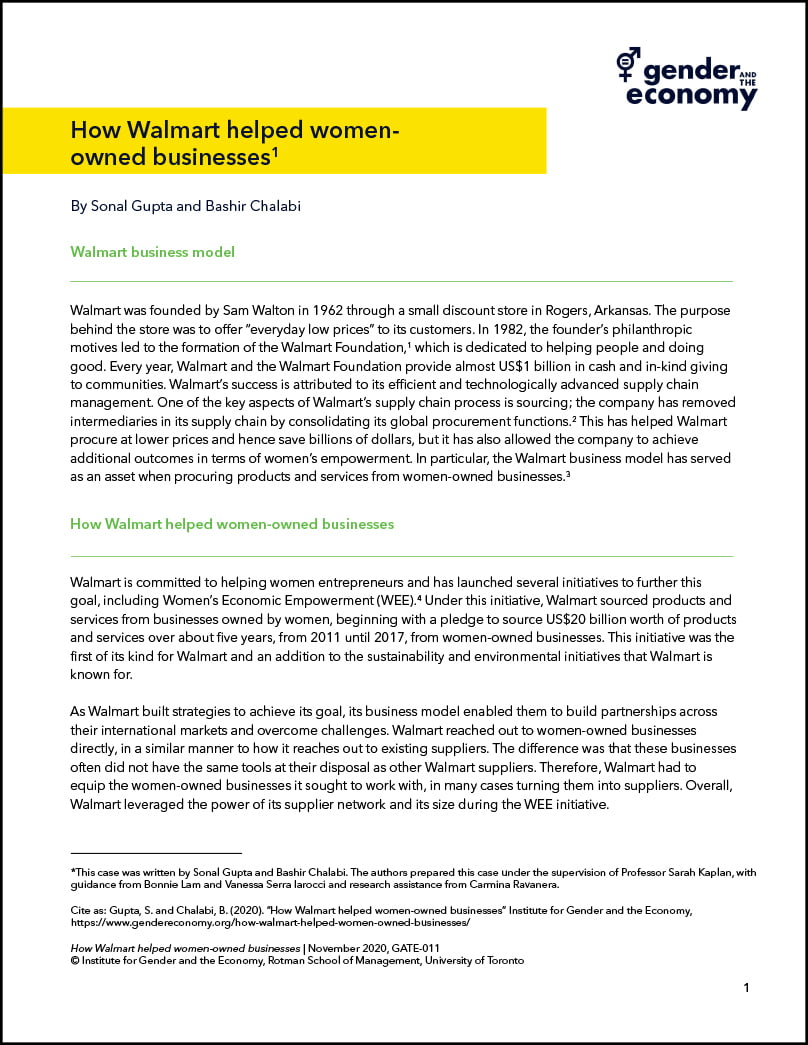Overview
This case studies how Walmart committed to helping women entrepreneurs through its Women’s Economic Empowerment (WEE) initiative. It details how the company surpassed its goal of sourcing US$20 billion worth of products and services from businesses owned by women from 2011 to 2017, while also empowering women and women-owned businesses in the global supply chain.
Course Topics:
- Diversity in supply chain management
- Women’s empowerment
- Leadership
- Corporate social responsibility
Introduction:
Walmart was founded by Sam Walton in 1962 through a small discount store in Rogers, Arkansas. The purpose behind the store was to offer “everyday low prices” to its customers. In 1982, the founder’s philanthropic motives led to the formation of the Walmart Foundation, which is dedicated to helping people and doing good. Every year, Walmart and the Walmart Foundation provide almost US$1 billion in cash and in-kind giving to communities. Walmart’s success is attributed to its efficient and technologically advanced supply chain management. One of the key aspects of Walmart’s supply chain process is sourcing; the company has removed intermediaries in its supply chain by consolidating its global procurement functions. This has helped Walmart procure at lower prices and hence save billions of dollars, but it has also allowed the company to achieve additional outcomes in terms of women’s empowerment. In particular, the Walmart business model has served as an asset when procuring products and services from women-owned businesses.
View and download the full case study
__________________________
This case was written by:
This case was written by Sonal Gupta and Bashir Chalabi. The authors prepared this case under the supervision of Professor Sarah Kaplan, with guidance from Bonnie Lam and Vanessa Serra Iarocci and research assistance from Carmina Ravanera.








